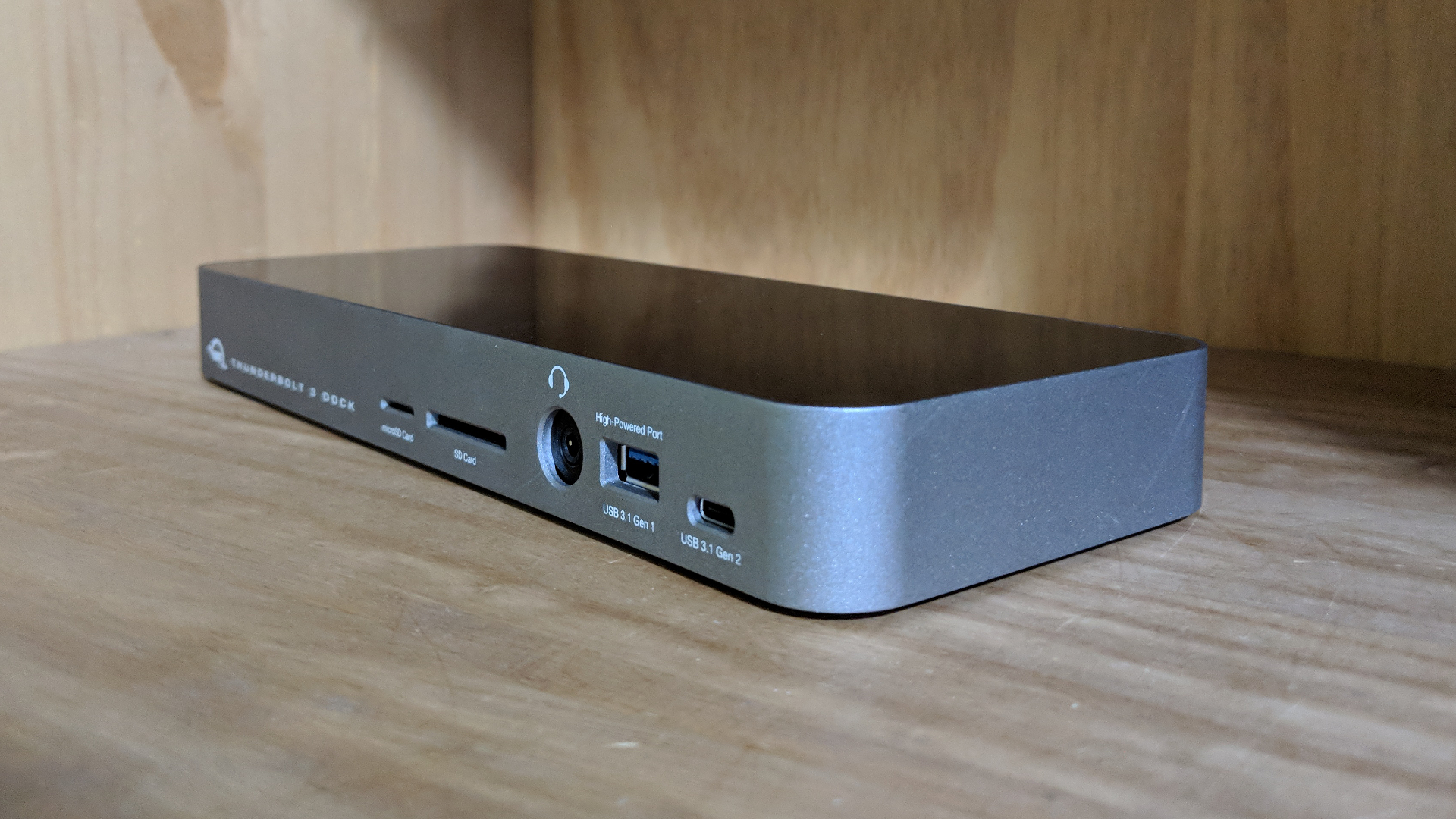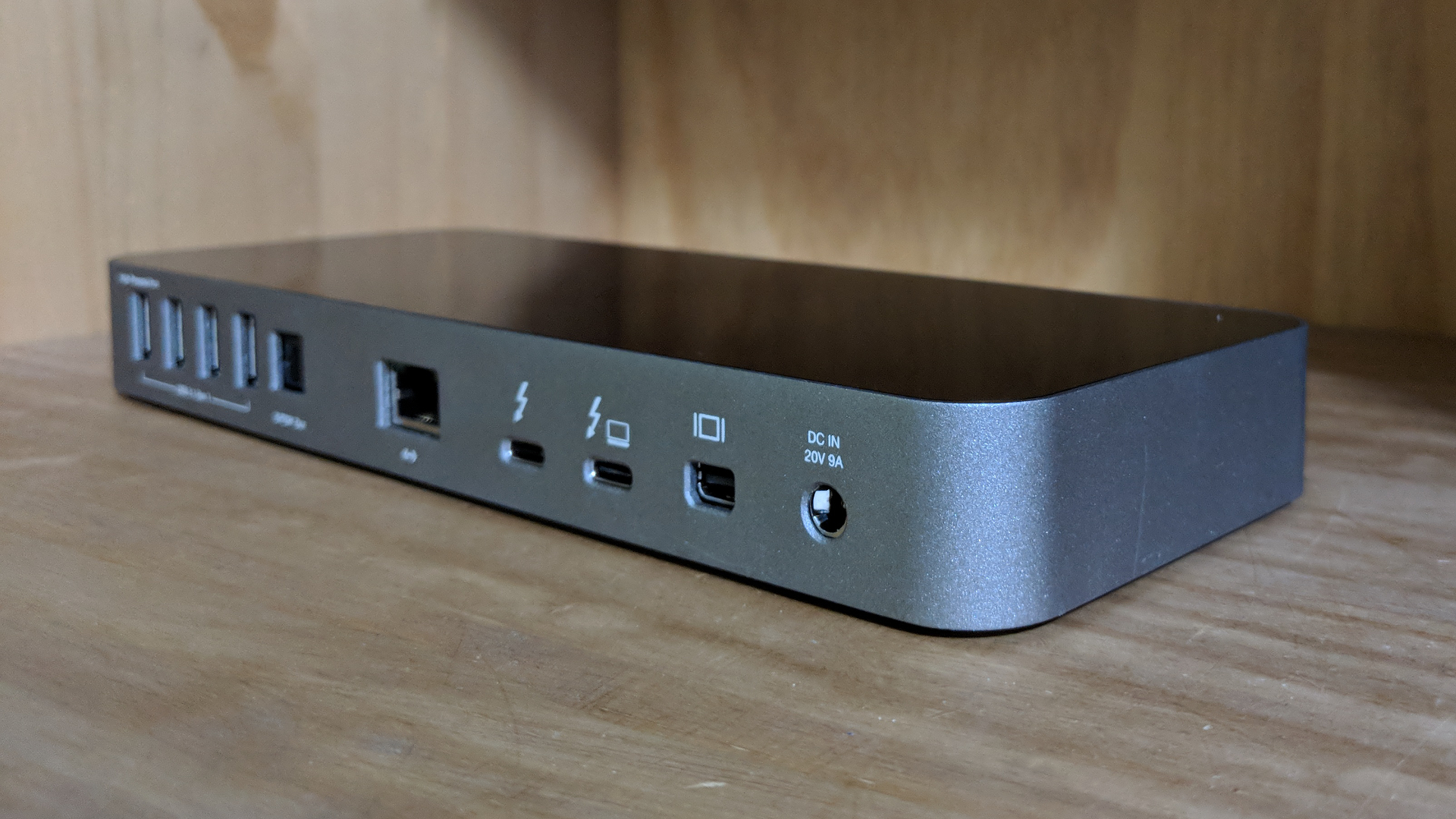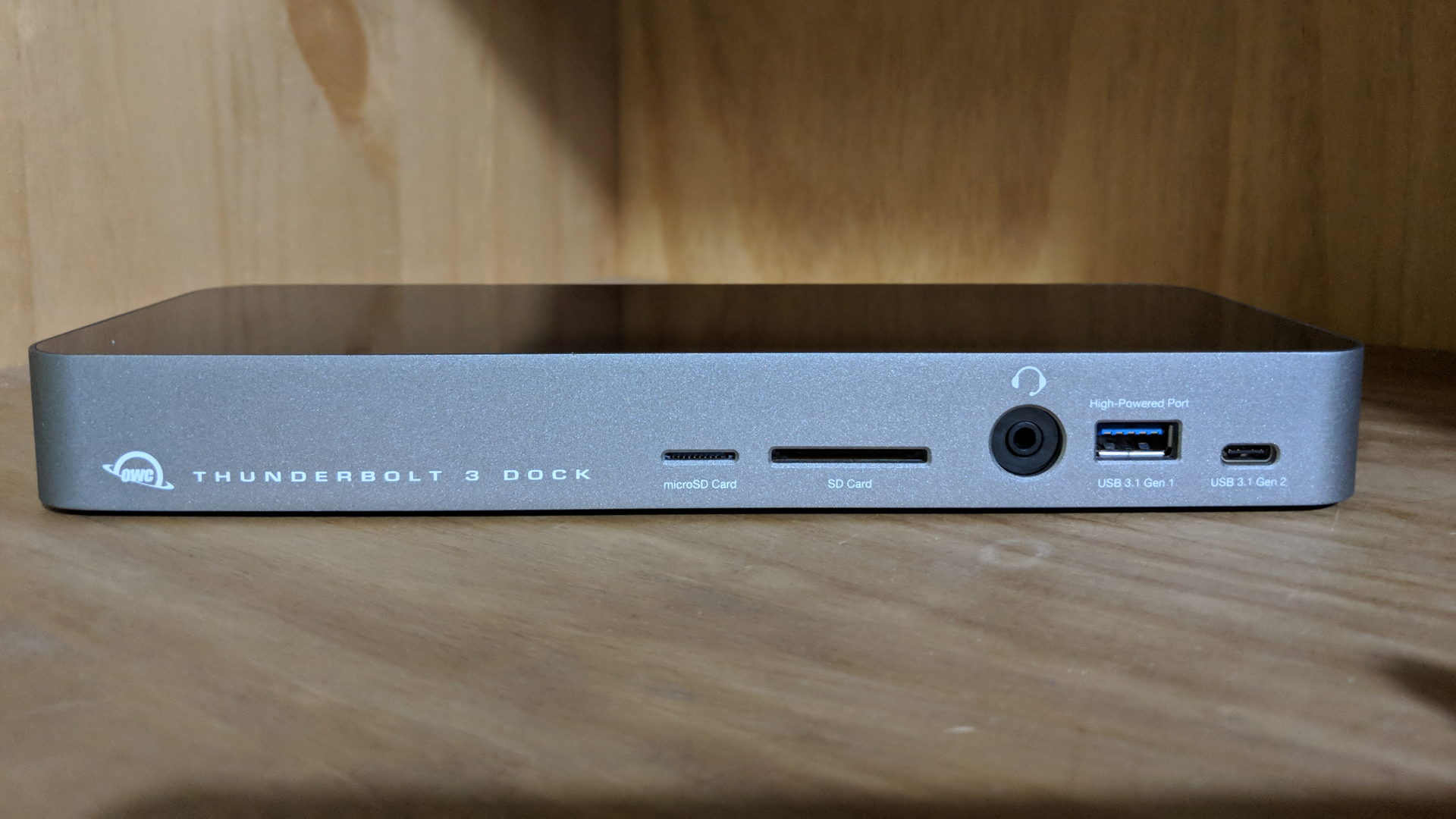TechRadar Verdict
The OWC Thunderbolt 3 docking station has plenty going for it: 85W power delivery, a flurry of ports and a decent price tag. As it stands, this dock should definitely be on your shortlist.
Pros
- +
85W power delivery
- +
Plenty of ports
- +
Keenly priced
- +
Two card readers
Cons
- -
No power button
- -
Piano gloss finish prone to dust
- -
No HDMI port
- -
Hefty power supply
Why you can trust TechRadar
Ever since Apple introduced the MacBook Air more than a decade ago and Intel formalized the Ultrabook format, thin-and-light laptops have gradually become mainstream. The transition to ever-slimmer notebooks has produced its own issues, though, as the number and size of ports have been reduced – and some connectors have been abandoned altogether.
One port, though – Thunderbolt 3 – is set to be the one that rules them all, which in turn is changing how users connect to devices. These changes have created opportunities for peripheral manufacturers, and OWC, like others, has pushed out Thunderbolt 3 devices, with the Thunderbolt 3 docking station being a prime example of what can be achieved.
It is available in designs with 12 and 14 ports, currently selling for $228.88 (around £180) after rebate for the 12-port version and $299.99 (around £240) for the 14-port model. The latter adds a USB Type-C connector, a higher 85W power delivery mode and a microSD card slot.

Design
There’s not much to complain about when it comes to the design of the OWC Thunderbolt 3 dock. It has a traditional brick-like form factor with a piano gloss finish on top (which is a dust and fingerprint magnet). There’s a microSD and an SD card reader, an audio socket, a High-Powered port (USB 3.1 Gen 1) and a USB 3.1 Gen 2 (Type-C) connector on the front.
The back plays host to four USB ports (USB 3.1 Gen 1), an SDPIF out port, a Gigabit Ethernet connector, two Thunderbolt 3 ports, a mini-DisplayPort and a 180W power port (20V,9A). There are no HDMI ports or any other legacy ports which might prove problematic in business environments where there are still a lot of older tech products around. Mac fans might rue the lack of any Firewire port, as well, especially in environments with plenty of storage options.

You’ll find four rubber feet underneath the device – note that this docking station hasn’t been designed to be used vertically as others have. Taking this route reduces the footprint of the product which can be useful for smaller working areas.
It’s also worth noting that there’s an external power supply which is almost as bulky and heavy as the docking station itself. The Chicony-produced PSU comes with around 2m of cable and is chunky because of the 180W maximum load that the dock can require.
Sign up to the TechRadar Pro newsletter to get all the top news, opinion, features and guidance your business needs to succeed!

In use
We didn’t encounter any hiccups with the OWC Thunderbolt 3 docking station. While we didn’t test it with a 5K monitor, we did try it with a 4K screen via a mini-DisplayPort and it worked well. You should be able to drive two 4K displays should you want to, although you will likely need an adaptor to pull that off, since there’s only one mini-DisplayPort.
A quintet of hardware chips (Intel DSL6540 and i210, Fresco Logic FL1100EX, C Media CM6533 and Genesis Logic GL3224) are running the show inside this gadget. We were able to power our test laptop, a Toshiba Portégé X30-E-12H, without any trouble, but found it disappointing that there’s no power button to turn the device off.
OWC bumped the power delivery capacity to 85W which should cater for a fully loaded Apple MacBook Pro without much trouble.

The competition
There are nearly 50 Thunderbolt 3 docking stations according to the information on the official Thunderbolt technology website, so in other words, there are plenty of capable rivals out there.
It is worth mentioning that all the major laptop vendors have their very own Thunderbolt 3 docking station, an astute move given how expensive these are, and how easy it is to upsell them to prospective buyers.
Some of them come with antiquated-but-still-useful VGA ports, full-size DisplayPort connectors or even HDMI ports, while others lack power delivery capabilities, or they offer built-in storage, like the LaCie 2big Dock.
Final verdict
So what makes a decent Thunderbolt 3 docking station? It needs to have a power button, 85W power delivery, and plenty of ports that are actually useful.
This particular model lacks the first requirement, hits the bullseye with the second one, and is almost on target with the third. So overall, it’s a bit of a mixed bag, and a lot will depend on exactly what you intend to do with the device.
There’s a three-year warranty for peace of mind, though, which might sway undecided folks, and having two memory card readers is an interesting unique selling point.
- We’ve picked out the best laptop docking stations

Désiré has been musing and writing about technology during a career spanning four decades. He dabbled in website builders and web hosting when DHTML and frames were in vogue and started narrating about the impact of technology on society just before the start of the Y2K hysteria at the turn of the last millennium.
